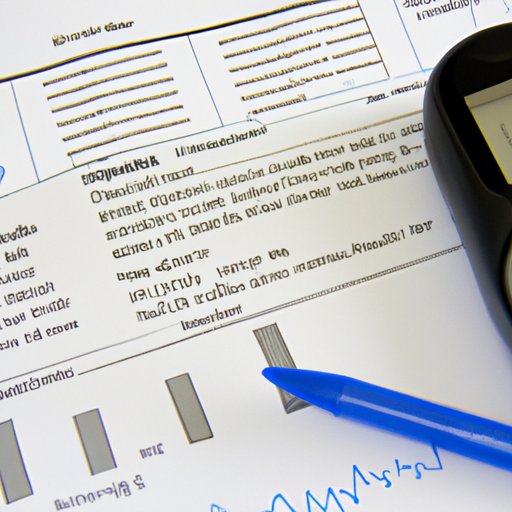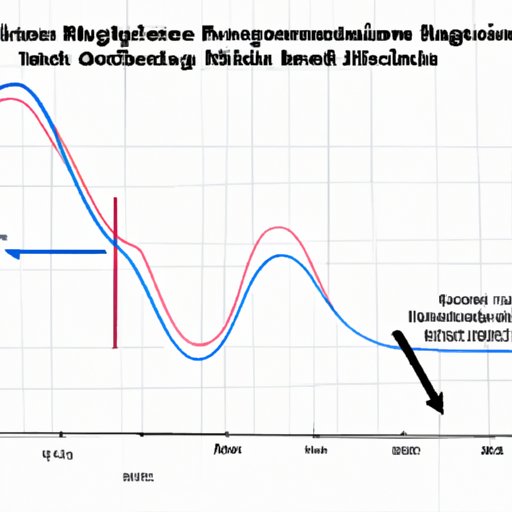Introduction
Diabetes type 2 is a chronic condition that affects millions of people around the world. It occurs when the body does not produce enough insulin or cannot effectively use the insulin it produces. This results in high levels of glucose in the bloodstream, which can lead to serious health complications if left untreated. Exercise has been shown to be an effective way of managing diabetes type 2, as it can help to regulate blood sugar levels and reduce the risk of developing further health problems.
Exploring the Benefits of Exercise for Diabetes Type 2 Patients
Physical activity can have many positive effects for people with diabetes type 2, including improving blood sugar levels, enhancing insulin resistance, and reducing the risk of developing long-term complications. Let’s take a closer look at how exercise can help manage this condition.
Improving Blood Sugar Levels
Exercise can help to lower blood sugar levels by increasing insulin sensitivity and reducing glucose production. When you exercise, your muscles take up more glucose from the bloodstream, which helps to keep your blood sugar levels within a healthy range. Additionally, regular physical activity can also help to reduce the amount of glucose produced by the liver, which can help to further stabilize blood sugar levels.
Enhancing Insulin Resistance
Insulin resistance is a major issue for people with diabetes type 2, as it can cause blood sugar levels to spike. Regular exercise can help to increase insulin sensitivity, which means that the body is able to use the insulin it produces more efficiently. This can help to keep blood sugar levels within a healthy range and reduce the risk of developing further health complications.
Reducing Risk of Complications
In addition to helping to regulate blood sugar levels, regular physical activity can also reduce the risk of developing long-term complications associated with diabetes type 2. Exercise can help to improve cardiovascular health, reduce inflammation, and strengthen bones and muscles, all of which can lower the risk of developing further health problems.

Analyzing the Positive Effects of Physical Activity on Blood Sugar Levels
As we have seen, exercise can have many beneficial effects on blood sugar levels in people with diabetes type 2. To understand how this works, let’s take a closer look at the specific ways in which physical activity can help to regulate blood glucose levels.
Increasing Insulin Sensitivity
When you exercise, your muscles take up more glucose from the bloodstream, which helps to keep your blood sugar levels within a healthy range. Regular physical activity can also help to increase insulin sensitivity, which means that the body is able to use the insulin it produces more efficiently.
Reducing Glucose Production
Regular exercise can also help to reduce the amount of glucose produced by the liver, which can help to further stabilize blood sugar levels. This is important for people with diabetes type 2, as uncontrolled glucose levels can lead to serious health complications.
Decreasing Blood Sugar Levels
Finally, physical activity can also help to decrease the amount of glucose in the bloodstream. This is especially important for those with diabetes type 2, as uncontrolled glucose levels can lead to serious health issues.

Investigating the Impact of Regular Exercise on Insulin Resistance
In addition to helping to regulate blood sugar levels, regular physical activity can also help to reduce the risk of developing insulin resistance. Let’s take a closer look at how exercise can help improve insulin sensitivity and reduce the risk of developing diabetes type 2.
Enhancing Insulin Sensitivity
Regular exercise can help to increase insulin sensitivity, which means that the body is able to use the insulin it produces more efficiently. This can help to keep blood sugar levels within a healthy range and reduce the risk of developing further health complications.
Lowering Blood Sugar Levels
Physical activity can also help to lower blood sugar levels by increasing insulin sensitivity and reducing glucose production. When you exercise, your muscles take up more glucose from the bloodstream, which helps to keep your blood sugar levels within a healthy range.
Reducing Risk of Developing Diabetes Type 2
Finally, regular physical activity can also reduce the risk of developing diabetes type 2. Exercise can help to improve cardiovascular health, reduce inflammation, and strengthen bones and muscles, all of which can lower the risk of developing further health problems.

Demonstrating How Exercise Can Help Improve Quality of Life for People with Diabetes Type 2
In addition to helping to regulate blood sugar levels and reduce the risk of developing further health complications, regular physical activity can also help to improve quality of life for people with diabetes type 2. Let’s take a closer look at how exercise can help.
Improving Cardiovascular Health
Regular physical activity can help to improve cardiovascular health by strengthening the heart and lungs and increasing circulation. This can help to reduce the risk of developing heart disease, stroke, and other cardiovascular complications associated with diabetes type 2.
Increasing Muscle Strength and Endurance
Exercise can also help to increase muscle strength and endurance, which can improve overall fitness and make daily activities easier. This can be especially beneficial for people with diabetes type 2, as it can help to reduce fatigue and improve mobility.
Enhancing Self-Esteem and Confidence
Finally, regular physical activity can also help to boost self-esteem and confidence. Exercise can help to reduce stress and anxiety, as well as improve mood and sleep quality. All of these benefits can help to improve quality of life for people with diabetes type 2.
Conclusion
We have seen that exercise can be an effective way of managing diabetes type 2, as it can help to regulate blood sugar levels and reduce the risk of developing further health complications. Regular physical activity can also help to enhance insulin sensitivity, lower blood sugar levels, and improve quality of life. In summary, exercise can be an invaluable tool in managing diabetes type 2 and improving overall health and wellbeing.
(Note: Is this article not meeting your expectations? Do you have knowledge or insights to share? Unlock new opportunities and expand your reach by joining our authors team. Click Registration to join us and share your expertise with our readers.)
